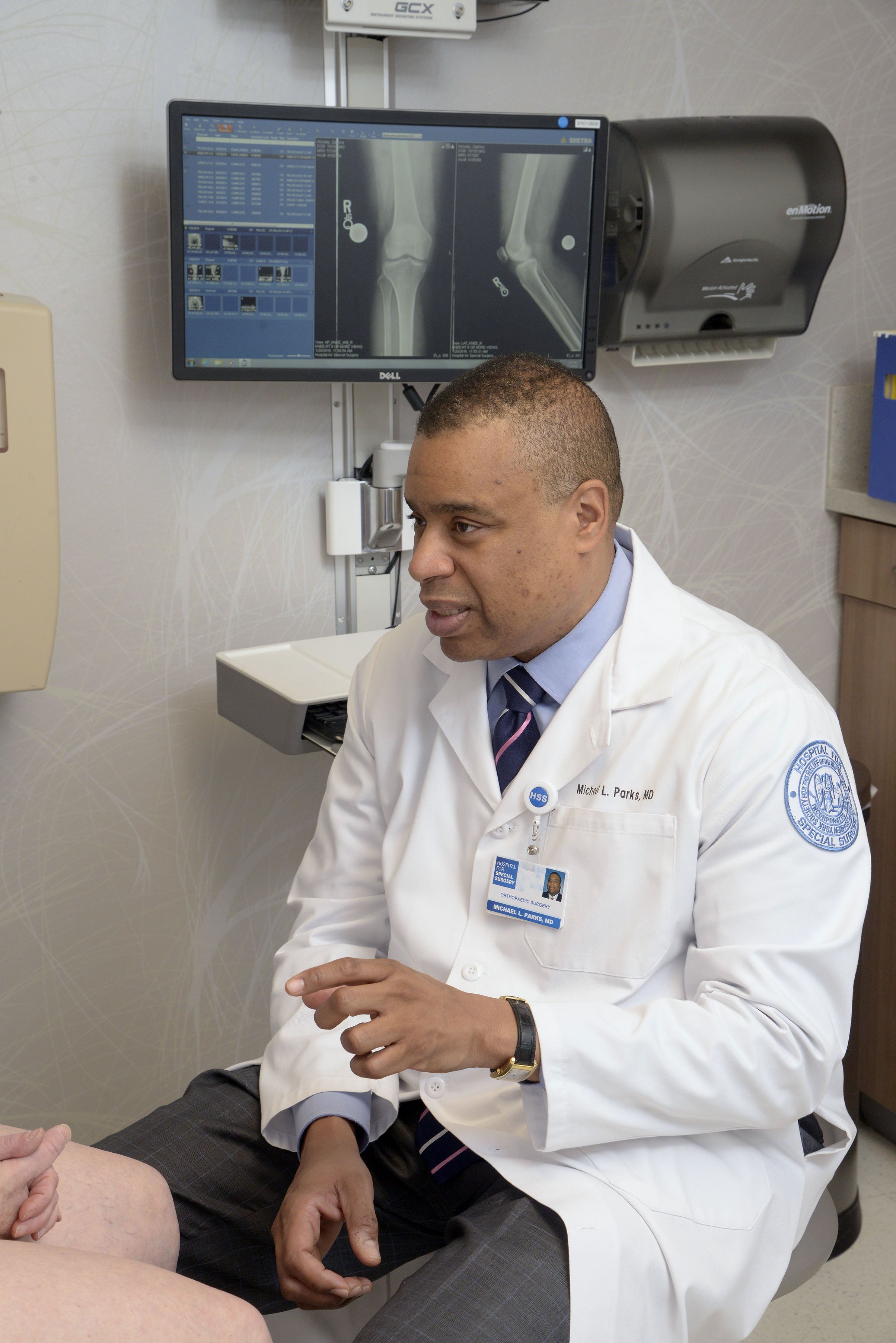
Alleviate Hip Pain and Regain Your Active Lifestyle
Total Hip Arthroplasty
The technical term for hip replacement is Total Hip Arthroplasty (THA). During the procedure, the ball and socket joint are replaced with metal and plastic implants that eliminate pain produced by your hip joint. Total hip replacement is typically recommended for patients who are suffering from severe chronic hip pain that limits their activities of daily living. This procedure aims to alleviate pain and allow patients to return to doing what they enjoy.
3 Parts to THA
-
The Femoral Component
A prosthetic inserted into the thigh bone.
-
The Acetabulum
A socket inserted into the pelvis.
-
An Acetabular Liner
A plastic insert that fits into the acetabular component.
Why is THA Performed?
People undergo total hip replacement primarily to alleviate pain and improve hip function. Here are some specific examples of conditions that are successfully treated with hip replacement:
Osteoarthritis: Osteoarthritis of the hip is a condition where there is loss of the protective layer (cartilage) that covers bones in joints. As the cartilage progressively gets thinner over time, the bones start to directly rub against another bone and cause pain in the joint.
Post-traumatic arthritis of the hip: This disease is caused due to direct trauma to the joint, such as from a fracture from a car accident. Resulting incongruity in a joint after injury may lead to cartilage degradation and wear and, ultimately bone on bone-on-bone articulation and pain.
Rheumatoid arthritis of the hip: Rheumatoid arthritis (RA) is a chronic inflammatory disease that usually affects slightly younger patients. It is characterized by chronic destruction of the joint caused by the immune system attacking the tissues of the joint. Typically, other joints are affected as well. Medications have significantly improved the care of patients with RA, but hip replacement is common when there is significant damage to the joint.
Osteonecrosis/avascular necrosis of the hip: This disease is caused by a lack of blood supply to the “ball” portion of the hip joint. The hip joint collapses and becomes painful. Total hip replacement can provide the return of function and pain relief. AVN may have no known cause but is also common in Sickle Cell Anemia patients, patients who have taken large doses of steroids, and patients with alcoholism.
Symptoms to Look Out For:
Hip pain that does not go away even with pain medications
Limited range of motion of the hip
Difficulty raising from sitting
Pain with walking
Pain that interferes with daily life, such as sleeping
Pain that does not improve with non-surgical treatments
What Does The Procedure Include?
Each patients’ treatment may vary in order to achieve the most effective. The surgery itself takes approximately 2 hours and full recovery occurs over the first 1 to 3 months with small remaining gains in the first year after surgery.
7 General Steps to THA
-
1
Pre-surgery clearance from primary doctor
-
2
Administration of local anesthesia and a sedative to optimize comfortability during the procedure
-
3
An incision to expose the hip joint
-
4
Removal of damaged cartilage and bone
-
5
Implantation and stabilization of new hip components
-
6
Closing of the incision
-
7
Post-surgery pain medications and rehabilitation
Explore Hip Replacement Techniques
Discover the key differences between posterior and anterior hip replacement approaches, including their visualization, muscle impact, and recovery times. Get a concise overview before diving into the full article for more details.

